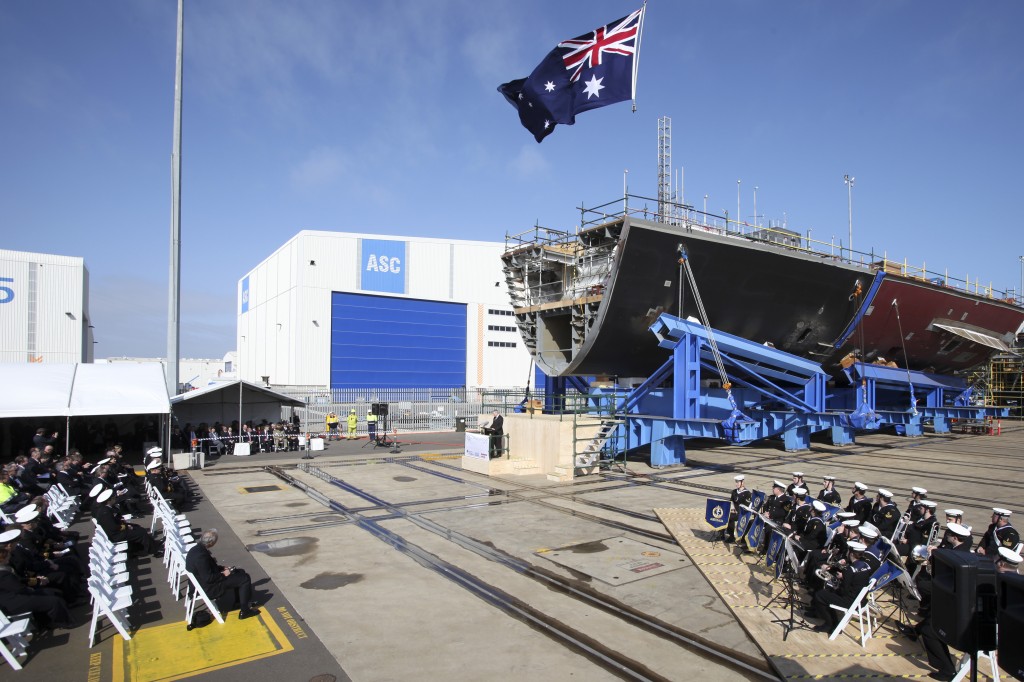 The 2015 Defence White Paper will come with a library of supporting documents, including a new Defence Industry Policy Statement (DIPS). This year is therefore an opportunity finally to develop a sensible defence industry policy: one that reflects the situation within which the ADF operates, one that provides a proper basis for the local defence industry, and one that establishes a base for the future development and sustainment of that industry.
The 2015 Defence White Paper will come with a library of supporting documents, including a new Defence Industry Policy Statement (DIPS). This year is therefore an opportunity finally to develop a sensible defence industry policy: one that reflects the situation within which the ADF operates, one that provides a proper basis for the local defence industry, and one that establishes a base for the future development and sustainment of that industry.
The current policy for defence industry—as laid down in DIPS 2010—does none of those things, and is little more than a series of concepts floating in free space. Still, recent efforts by DMO Industry Division to connect up some of the concepts have been worthwhile, and hopefully the fruits of those efforts will be reflected in DIPS 2015.
I outline here a conceptual, joined-up framework for defence industry policy. The framework consists of three pillars, namely:
- Determining strategic alignment
- Seeing industry as a capability
- Creating an investment environment
Strategic alignment must be the starting point for any useful defence industry policy. This concept isn’t new—in 2006, Paul Dibb wrote that ‘Defence needs to be much better at aligning industry capability with defence strategy’.
The concept requires us to determine those capabilities that are sufficiently strategically important to us to retain them in Australia. Strategic alignment thus defines those capabilities that are actually Priority Industry Capabilities (PICs).
Consideration and treatment of industry as a capability is the ‘glue’ that holds defence industry policy together, and is the logical follow-on from the concept of strategic alignment. DWP 2009 defines PICs as ‘those industry capabilities which would confer an essential strategic capability advantage by being resident within Australia, and which, if not available, would significantly undermine defence self-reliance and ADF operational capability’. This statement introduced risk into the capability-industry equation—even though DIPS 2010 promptly ignored it.
A defence industry policy focused on the management and remediation of strategic risk seems to be the obvious way forward. There are two issues for consideration: (1) the risk in being able to deploy the right capability into the field and achieve those tasks set by government (mission risk), and (2) the ability to do this in a manner over which we have control (sovereign risk). Formal consideration of the industry-associated risks when making acquisition and sustainment decisions would ensure we have the ability and capacity in the local industrial sector to manage capabilities associated with higher strategic risk.
Treating industry as a fundamental input to capability will ensure strategic risks due to industrial capability are assessed and mitigated in the early stages of project planning, and the impact of proposed acquisition strategies on Australian industry can be considered up front. Weaknesses or deficiencies in the local industrial base can then be identified, and (if necessary) support measures can be included as part of overall project costing.
Finally, the creation of an environment conducive to the investment necessary for the development of the defence industry that we need is the sole province of the government. Defence is the single customer for defence business, so how can it be otherwise?
Creation of the necessary investment environment needs to consider the following aspects:
- Defence-industry relationships. Importantly, Defence needs to get out from behind the “probity veil”, and to ensure that engagement with industry isn’t just through the primes.
- Industry confidence. Industry confidence has been seriously eroded over recent years as the Defence Capability Plan (DCP) has moved from the fiction part of the library into the fantasy section. The DCP is a key document for investment decisions and needs to be credible.
- A level playing field. A 2012 report by the UK Royal United Services Institute showed that 36% of every pound spent in the UK was returned to the government in tax. Something similar probably applies here. Given that no money returns to the government when contracts are placed offshore, the real level playing field is one that factors in a percentage differential between in-Australia bids and those from offshore.
- The importance of innovation. The introduction of the Defence Innovation Realisation Fund in DWP 2013, and the ability to fund minor and other innovative projects in this way, is a positive development. Other mechanisms to move local developments up the Technology Readiness Level scale, and to introduce them into service, also need to be explored.
- Export opportunities. For defence equipment, these don’t spring fully-formed into view, but are part of a continuum of activities that span defence needs, innovation, commercialisation, requirements definition, capability selection and ongoing product improvement. Strategic planning for exports is required.
- Reducing the cost of doing business with Defence.
The Australian defence industry sector is at a cross-roads. The current low-project-risk, off-the-shelf road winds inexorably towards a sustainment-only future that paradoxically reduces our ability to look after ourselves and increases strategic risk. A new path is required, one that addresses the industry capability needed to reduce national security risks.
Graeme Dunk is manager of Australian Business Defence Industry, a national defence industry association. Image courtesy of Department of Defence.

